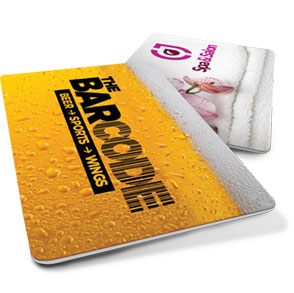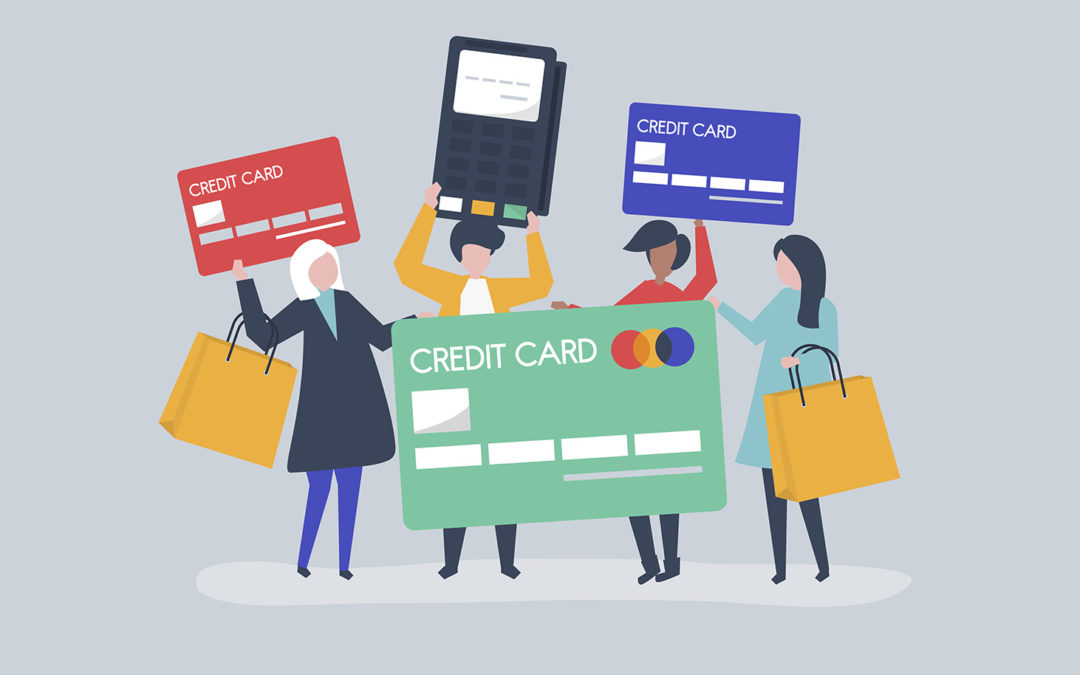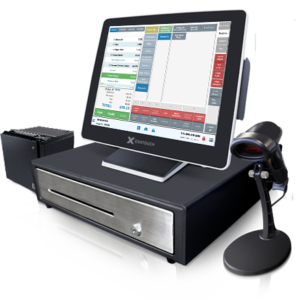All you ever wanted to know about gift and loyalty programs
Grab your keys, your purse, your wallet, open your glove compartment or junk drawer – I’d bet my life you have a loyalty card or gift card hanging around somewhere.
Go ahead, I’ll wait…
Did you find one?
I know you did. Whether we’re getting loyalty points from our local supermarket to save money on the gas we buy at our local gas station or Aunt Edna gave us a $15 Dunkin’ Donuts Gift Card for our birthday, we all have them: and we’ve all used them.
They’re ubiquitous (I’ve always wanted to use that word… bucket list – CHECK!) and they’re just as valuable for the company issuing them as they are for the customer using them.
Why do we want to run a loyalty card or gift card program?
Are you and your team trying to figure out how you can increase cash flow and sales? Are you trying to figure out a way to retain the customers you have rather than find new ones? Are you thinking about your customer’s experience and how you can make it better?
Loyalty and gift card programs can answer all these questions and so many more. Below are some of the benefits to your business when running a loyalty card or gift card program:
- Increased sales
- Improved cash flow
- Creating cash flow ahead of sales
- Acquiring new customers
- Retaining existing customers
- Giving your customers a better, personalized experience
- Branding
Let’s take a proverbial step back to understand what a gift card program and a loyalty program are and the benefits of each.
What is a gift card and how do they work?
While most people know what a gift card is they may not realize there are two different types of gift card. It’s actually quite obvious but most people have never given the topic much thought.
Open Loop Gift Cards
Open loop gift cards usually have the logo of one of the major credit card companies such as Visa or Mastercard, American Express or Discover somewhere on the gift card. They can also be co-branded with a retailer or bank such as an Amazon Visa Card. The advantage to an open loop gift card is they can be used at a variety of different stores accepting that card issuers payment cards. Most open loop cards can occasionally also require a small fee up front for processing.
Other types of open loop cards are credit cards, debit cards, or prepaid cards (used by employers to pay employees lacking a bank account or even federal, state, and local governments for public assistance benefits) but that is a conversation for another day.
Closed Loop Gift Cards
 Closed loop gift cards are unique to the retailer, restaurant or business who issues them. They are branded and cannot be used at any other business to make purchases. Most closed loop gift cards are processed just like your regular credit cards and debit cards and are often processed through the same point of sale device, terminal, or card reader.
Closed loop gift cards are unique to the retailer, restaurant or business who issues them. They are branded and cannot be used at any other business to make purchases. Most closed loop gift cards are processed just like your regular credit cards and debit cards and are often processed through the same point of sale device, terminal, or card reader.
Another type of closed loop card is your favorite retailers credit card. Take your Target credit card for example. This card is a credit card and functions just like an open loop credit card but can only be used at Target. Again, we’ll tackle this another day.
For the purposes of our conversation today, we will be only be referencing closed loop gift cards. 610 Merchant Services and merchant services companies such as ours, can not issue open loop gift cards for use at your business.
Benefits of having a gift card program for your business.
Building Your Brand
Every year over 90% of US consumers purchase or receive a gift card. Offering branded gift cards is a great way to build and enhance your brand’s visibility and to generate more first-time customers. In addition, branded gift cards are easier to track than traditional advertising practices and ensure customers will visit and spend money in your store.
Incentive to spend money at your business
When someone is given a gift card to use at your business, as opposed to cash, those customers have no choice but to spend it at your business. Plus, after visiting your store, experiencing your customer service and using your products or services, the hope is they will return to spend more.
Generate money ahead of sales
Your business gets paid in advance for any product or service you provide when a gift card is purchased. Better still, consumers often spend more than the value of the card. As an added bonus, that revenue is recorded whether the card is used or not. There are literally billions of dollars (that’s a ‘B’ for BILLIONS) of unused gift cards in the United States alone.
Endless promotional strategies
By using gift cards at your business, it opens the doors to endless promotional strategies. You can give away gift cards on radio station promotions, vendor fairs, contests, charitable fundraisers and so much more. It’s an easy way to get your brand in front of new customers.
Opportunity to create a Loyalty Program
Looking for a great opportunity to create a loyalty program at your business? Gift cards can be the answer. For example, you can integrate a loyalty program with your gift cards and for every $10.00 spent by your customer they’ll receive points. Customers can redeem those points in the form of… you guessed it: a gift card redeemable at your store.
What do I need to start a gift card program?
Starting a gift card program is very easy. In fact, most of the work is done by your processor and all you need do is choose a style or create a custom layout, choose the quantity of cards you’d like to start with (there may be minimum orders but (#shamelessplug) 610 Merchant Services will give you the first 50 for free), then start selling them at your counter or give them away to encourage first time customers… easy peasy.
What is a loyalty program?
 We all know how loyalty programs work with large worldwide, nationwide, or even regional brands. Most, if not all of us, have a loyalty card with our favorite supermarket and scan our cards before each purchase redeeming the loyalty points or dollars we earn every time we shop for deeper discounts, savings at sister brands, or even savings at the gas pump.
We all know how loyalty programs work with large worldwide, nationwide, or even regional brands. Most, if not all of us, have a loyalty card with our favorite supermarket and scan our cards before each purchase redeeming the loyalty points or dollars we earn every time we shop for deeper discounts, savings at sister brands, or even savings at the gas pump.
There is a misconception that loyalty programs are for large corporations only. They’re not.
Here we’ll be studying the smaller service oriented or local retailers. The type of business without the resources or the need for a complicated system. Mom and pops who would like to show loyalty to their customers in return for their continued patronage.
How can my small business take advantage of a loyalty program?
Customer loyalty programs are a great way for small businesses like yours to engage with customers beyond just the purchase, making them happier and more likely to keep buying from you. And, more importantly, keep them spending their money on your products and services.
Are there repeat purchases of your product or service? If so, you can easily create a loyalty program for your customers. You can offer a gift card on every 12th month of service. You can offer a discount with a strategic partner and they can offer their customers a discount with you.
With a little bit of thought and creativity the possibilities are endless. Even better, why not ask some of your best customers what they would want from a loyalty program. They’ll tell you and you’ll know what you’re offering is of value to them.
How can I keep track of purchases and customer data?
Great question!
If you have a retail business with a Point of Sale (PoS) system all you’d have to do is ask at the time of sale for the customer’s phone number, email, or even just their name and your PoS system will log that sale under your customer’s profile. If you don’t have a PoS system, (#shamelessplug) call 610 Merchant Services and we’ll be glad to get you set up.
If you have a service-based business like an HVAC company or home cleaning service, you can easily track your customer activities through your appointment and bookkeeping software.
For even smaller companies with just a few customers a month or even a year, you can use your bookkeeping software like QuickBooks to track your customers and store their data.
Benefits of a loyalty program for your business.
Collection of data
Information is key. Not just any information but real customer data. Customers today want and expect a more personalized experience. Encouraging customers to complete profiles as part of your loyalty program allows you to gather the information needed to not only personalize the customer experience, but to create more targeted marketing campaigns and build better relationships with your customers.
Save money
Customer data can be used to for small retail stores to understand purchasing trends and help you keep items in stock that sell quickly instead of warehousing items that collect dust and can cost upwards of twenty-five dollars a square foot to stock. For service-based companies, the customer data collected can help you improve your service offerings which in turn will allow you to raise pricing on better services.
Customer appreciation
A personalized loyalty program will make your customers feel like they have an emotional connection with you and your brand and feel appreciated. A little bit of appreciation can increase customer patience in case of mishaps, improve their interactions with you and your employees, and even remove price sensitivities that would otherwise cause them to move to another option. Showing appreciation is as easy as celebrating your customers special day, anniversary, birthdays, etc. with points or rewards or free services.
Increase sales
Using the information you gather about your customers will allow you to make better, targeted purchasing suggestions which will increase the likelihood they will purchase suggested products. A customer who feels they have a more personalized shopping experience will spend more money.
Customer retention
Although creating and rolling out a loyalty program does involve a small investment, customer retention strategies are often seven to ten times less expensive than attracting new customers. Customer retention boosts your profits through savings in marketing and increases in sales to loyal customers.
Brand Advocacy
Showing appreciation for your customers and repaying them with the same loyalty they show you is the easiest way to create brand advocates. Real brand evangelists who will talk about you at every opportunity which translates to more loyal customers and more sales.
Attract new customers
Who doesn’t love a good discount?! If a potential customer sees or hears of a good loyalty program where rewards are easily accessible and redeemable, they’re more likely to abandon a brand with a poor or non-existent loyalty program and try your brand.
How do I start a gift or loyalty program?
Getting started with either of these types of programs is as easy as calling your current merchant services company. If they can’t help you (here comes another #shamelessplug!) give 610 Merchant Services a call and we’d be glad to hook you up.
What do I need to start a loyalty program
Here are few steps you may want to follow when starting your customer loyalty program.
Know your current customers
 Knowing as much information on your customers as possible is probably the most important step in starting your loyalty program. Keep these questions in mind when you begin building your program:
Knowing as much information on your customers as possible is probably the most important step in starting your loyalty program. Keep these questions in mind when you begin building your program:
- How much does this customer spend every year?
- What types of products do they buy and how frequent?
- How long have they been a customer?
- Is there an opportunity to offer them upsells or addons?
- Do we profit from their purchases?
- Is there an opportunity to improve our business relationship?
- How satisfied are they with the relationship now?
Plan
Before starting a loyalty program, you should know, or at the very least have an idea of, your customer’s current level of satisfaction with your brand. Send out surveys, read the reviews your customers are posting or even conduct your own customer interview.
Set realistic goals
Set measurable goals for the program and don’t forget to measure them. Simply setting the goals and not knowing if you achieved or even exceeded them defeats the purpose. Using a good PoS System or CRM is very helpful.
Set the budget
Set a budget for managing customer retention and a separate one for developing new customers. To do so, consult your industry average, if you are looking for above‑average growth, increase your budget accordingly.
Choose who to target
Using the information you gathered during your surveys and/or interviews categorize your customers by criteria based on your business objectives. Some criteria could be:
- Volume of purchases
- Loyalty of customer over time
- Willingness to purchase other products or services from you
Use what you have learned
Use what you have learned to find creative ways to build your loyalty program that will entice or enhance your customers relationship. Things like:
- Monthly customer check-ins
- Recognizing birthdays
- A “just for you” gift
- Private shopping
Let’s get started!
Gift and loyalty programs are a great way to improve sales, improve cash flow retain customers and build a tribe of advocates. I can’t think of a single industry or type of business that wouldn’t benefit from one if not both of these types of programs.
If you’d like to take your business to the next level, contact your merchant services provider or contact (#shamelessplug) 610 Merchant Services and we’ll talk you through the process and help you figure out the right plan for your business and your goals.








 Closed loop gift cards are unique to the retailer, restaurant or business who issues them. They are branded and cannot be used at any other business to make purchases. Most closed loop gift cards are processed just like your regular credit cards and debit cards and are often processed through the same point of sale device, terminal, or card reader.
Closed loop gift cards are unique to the retailer, restaurant or business who issues them. They are branded and cannot be used at any other business to make purchases. Most closed loop gift cards are processed just like your regular credit cards and debit cards and are often processed through the same point of sale device, terminal, or card reader. We all know how loyalty programs work with large worldwide, nationwide, or even regional brands. Most, if not all of us, have a loyalty card with our favorite supermarket and scan our cards before each purchase redeeming the loyalty points or dollars we earn every time we shop for deeper discounts, savings at sister brands, or even savings at the gas pump.
We all know how loyalty programs work with large worldwide, nationwide, or even regional brands. Most, if not all of us, have a loyalty card with our favorite supermarket and scan our cards before each purchase redeeming the loyalty points or dollars we earn every time we shop for deeper discounts, savings at sister brands, or even savings at the gas pump. Knowing as much information on your customers as possible is probably the most important step in starting your loyalty program. Keep these questions in mind when you begin building your program:
Knowing as much information on your customers as possible is probably the most important step in starting your loyalty program. Keep these questions in mind when you begin building your program:



 Streamline your business with a full-featured POS system that keeps you up to date with the latest payment processing technologies, and helps you easily manage your day to day operations.
Streamline your business with a full-featured POS system that keeps you up to date with the latest payment processing technologies, and helps you easily manage your day to day operations.